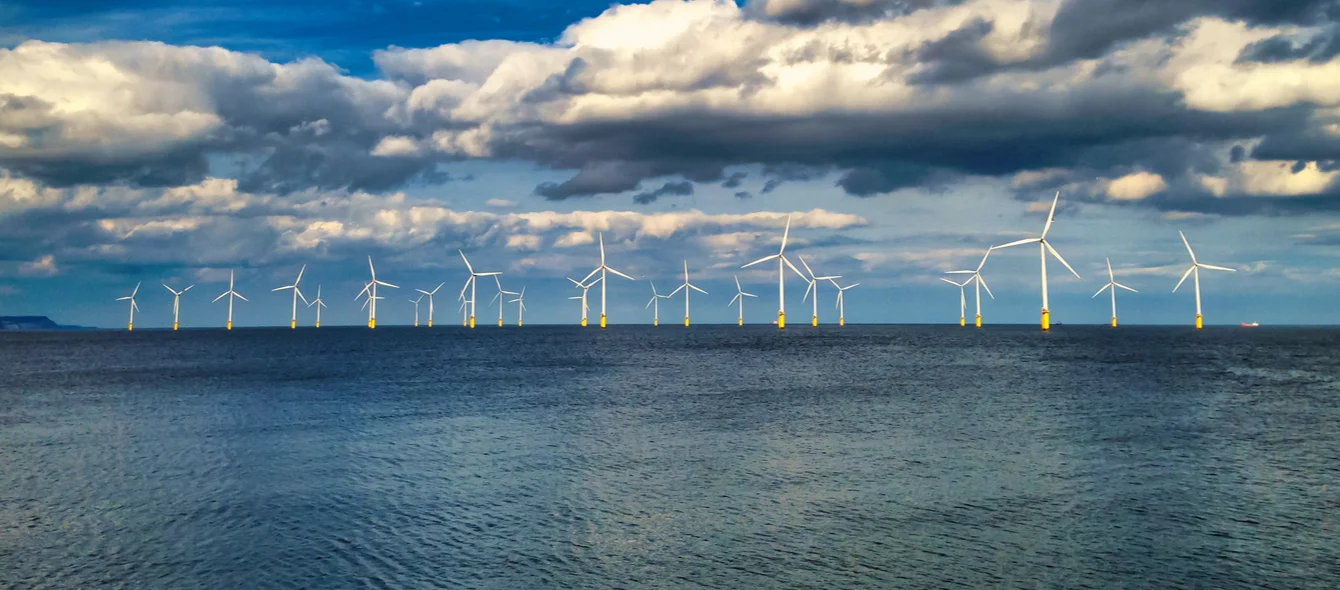Despite a wide range of restrictions prompted by the coronavirus pandemic, Europe’s offshore wind sector looks back on a remarkable year. A whopping 356 turbines in nine wind farms went online last year, driving up offshore capacity to some 2.9 gigawatts (GW). This is the fourth-highest figure in the last decade.
The level of funds committed in 2020 is also exceptional. Final investment decisions were made for eight new offshore wind projects. An equivalent of 26.3 billion euros has been set aside to build new assets in the upcoming years, with a combined installed capacity of 7.1 GW. This translates into record capex and associated capacity expansion. The previous high point was 18.2 billion euros, which financed a build-out of 5 GW in 2016.
Investments in new offshore assets in Europe
Source: WindEuropeThis and further interesting data has been published in the latest edition of the Offshore Wind in Europe – Key trends and statistics 2020 report by European sector association WindEurope. The figures clearly show that the offshore wind industry will post significant growth in the coming years – thanks to ambitious expansion plans in many countries. Besides, the sector is set to expand not only in Europe, but actually the world over. According to an analysis by global consultancy Renewables Consulting Group (RCG) Asian developers have also reached final investment decisions on large-scale offshore wind projects.
New installations in Europe
Wind turbines with an aggregate capacity of 2,918 megawatts (MW) came online in Europe in 2020. Build-out was thus about 20 percent down on 2019, but in line with long-term forecasts. Despite COVID-19 constraints and challenges, the wind sector managed to stay on its expansion schedule.
Expansion of offshore capacity in Europe (2020)
Source: WindEuropeThe by far largest number of wind turbines was commissioned off the Dutch coast. Boasting 1,494 MW of new installed capacity, the Netherlands accounted for over half of Europe’s capacity expansion. Second and third spot were occupied by Belgium (706 MW) and the United Kingdom (483 MW). Germany, consistently among the top three in Europe in terms of build-out in recent years, recorded the lowest growth since 2012, coming in at 219 MW. Furthermore, Portugal began operating two 8.4 MW turbines as part of a pilot project.
Offshore capacity in Europe
The partial commissioning of the Borssele 1&2 (752 MW), Borssele 3&4 (732 MW) and Borssele 5 (19 MW) wind farms enabled the Netherlands to more than double its offshore capacity to 2.6 GW. Belgium connected the Northwester 2 (218 MW) and Seamade (487 MW) wind farms to the grid, giving the country in excess of 2.2 GW of offshore power. As a result, the two Benelux states leapfrogged Denmark (1.7 GW) which did not put any new wind turbines online last year.
Installed capacity of offshore wind in Europe
Source: WindEuropeAlthough expansion in the United Kingdom was dwarfed by build-out from 2017 to 2019, the UK easily remains Europe’s front-runner, boasting a grand total of 10,428 MW, leaving behind a distant second-place Germany with 7,689 MW. These five countries combined account for over 99 percent of all offshore capacity in Europe, where offshore wind makes a major contribution to energy supply. The remaining one percent of installed capacity is located in the sovereign waters of nine European countries including Sweden, Finland, Portugal and France. These assets are often pilots and not operated commercially. However, offshore wind will increasingly gain significance in these countries as well – above all in France.
A look at the ownership stats for European offshore wind farms reveals a hotly contested and competitive market. According to the WindEurope report, by the end of 2020, Ørsted accounted for more than 17 percent of installed offshore capacity, with a share of over 10 percent being held by RWE Renewables and Vattenfall and Macquarie Capital each owning six percent, rounding off the top four. Other renowned energy companies hold smaller proportions of total capacity.
Top 10 offshore wind farm owners
Source: WindEuropeFinancial activity in Europe
“€26 billion in new investments in 2020 is a huge vote of confidence in offshore wind. Investors see that offshore wind is cheap, reliable, and resilient – and that governments want more of it”, WindEurope CEO Giles Dickson said to commemorate the publication of the report.
Activity worldwide
As reported by the Renewables Consulting Group, last year investment decisions were also made outside Europe in respect of two large-scale projects off the Taiwanese coast. The Changfang and Xaido wind farms are projected to have an aggregate capacity of 598 MW.
Offshore wind energy has made far more progress in the People’s Republic of China where the sector recorded unrivalled growth on the back of ambitious expansion plans. According to the analysis by the Renewables Consulting Group, this enabled the PRC to supplant the UK as the world’s largest market in terms of installed capacity by the end of the year. However, data on the Chinese market is scant due to its isolated environment in which Chinese companies operate nearly exclusively and project details are not published to the extent customary in other markets.
Despite the incomplete picture due to China, one thing is for certain: 2020 was a very successful year for the offshore wind industry, which remains on course for growth in view of the ambitious expansion plans of many countries.
Photo credit: shutterstock.com, Nuttawut Uttamaharad
